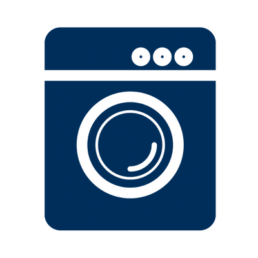Recycling of electrical and electronic equipment -
with us you will meet legal requirements and gain an additional package of benefits
Are you a manufacturer of electrical and electronic equipment? Do you resell equipment manufactured on your behalf? Or maybe you deliver equipment to the country from abroad? If so, then you have the following duties:
- organising and financing the collection of waste equipment from collectors and processing it
- reaching the minimum level
collection of used equipment at the level of not less than 65%
average annual weight of equipment placed on the market - achieving a minimum level of recovery and preparation for reuse and recycling of waste equipment
- carrying out public education campaigns

Give them to us. We will help you meet the above obligations and avoid the product fee
Equipment that is subject to statutory obligations:

1. Refrigerators, air conditioners, heat pumps and other temperature exchange equipment

2. Laptops, TV sets, monitors and other devices with a screen area of more than 100 cm2

3. lamps: fluorescent, high pressure discharge (HID), low pressure sodium, light emitting diodes (LED)

4. washing machines, automatic dryers, dishwashers, cookers, audio or video reproduction equipment, music equipment, large-size printers, large-size medical devices, ATMs, photovoltaic panels and other large-size equipment, one dimension of which exceeds 50 cm

Vacuum cleaners, sewing machines, microwave ovens, fans, irons, toasters, electric kettles, curling irons, electronic toys, sports equipment, sensors, small medical devices and other small equipment, no dimension of which exceeds 50 cm

6. Mobile phones, GPS equipment, calculators, routers, computers, printers and other IT equipment with none of the dimensions exceeding 50 cm
Your Benefits at one glance
Your Benefits
I am textblock. Click edit button to change this text. Lorem ipsum dolor sit amet, consectetur adipiscing the elite. Ut elite tellus, luctus nec ullamcorper mattis, pulvinar dapibus leo.
Your Benefits
I am textblock. Click edit button to change this text. Lorem ipsum dolor sit amet, consectetur adipiscing the elite. Ut elite tellus, luctus nec ullamcorper mattis, pulvinar dapibus leo.
Your Benefits
I am textblock. Click edit button to change this text. Lorem ipsum dolor sit amet, consectetur adipiscing the elite. Ut elite tellus, luctus nec ullamcorper mattis, pulvinar dapibus leo.
Your Benefits
I am textblock. Click edit button to change this text. Lorem ipsum dolor sit amet, consectetur adipiscing the elite. Ut elite tellus, luctus nec ullamcorper mattis, pulvinar dapibus leo.
3 reasons to choose Interzero
You will fulfil your statutory obligations
collection, recovery, preparation for re-use and recycling of electrical and electronic equipment
Better processes
intuitive online ordering system
Additional services
implementation of other obligations in the field of extended producer responsibility, e.g. for batteries, products, packaging
Frequently Asked Questions (FAQ)
WEEE is waste defined as waste electrical and electronic equipment. Sometimes called WEEE from English - Waste of Electrical and Electronic Equipment.
The legal basis is: Act of September 11, 2015. on waste electrical and electronic equipment (Journal of Laws of 2015, item 1688, as amended)
https://isap.sejm.gov.pl/isap.nsf/DocDetails.xsp?id=wdu20150001688
Electrical and electronic equipment are devices whose operation requires connection to electricity or the presence of electromagnetic fields. This category also includes equipment for the generation, transmission and measurement of current and electromagnetic fields, as well as those designed for use at a voltage not exceeding 1000 volts for alternating current and 1500 volts for direct current.
The person introducing the equipment is a manufacturer, a company that sells devices under its own brand, imports equipment from abroad. The introducing agent can also be a distributor of equipment.
The records should show the weights of the introduced equipment groups and their intended use, distinguishing between households and others.
We are waiting for you. Contact us.
